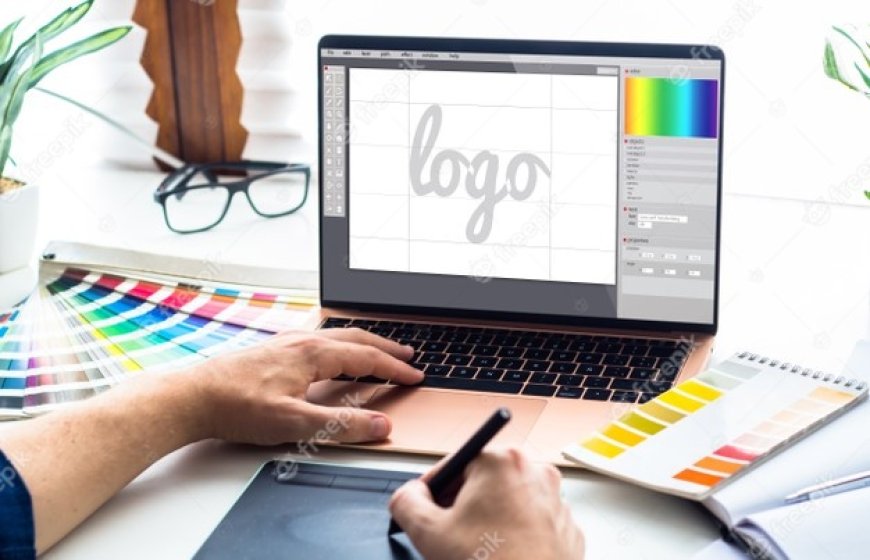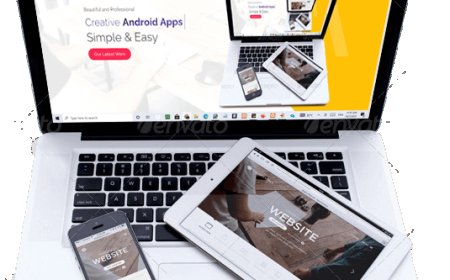What Role Does Typography Play in Successful Logo Designing?

In the world of logo design, typography is a powerful tool that can significantly impact the effectiveness of a logo. As a logo designer in India, understanding the nuances of typography is crucial for creating logos that are not only visually appealing but also convey the right message to the target audience. This article delves into the various roles typography plays in successful logo designing and how it can enhance a brand's identity.
The Importance of Typography in Logo Design
Typography refers to the art and technique of arranging type to make written language legible, readable, and visually appealing. In logo design, typography is more than just selecting a font; it involves choosing the right typeface, size, spacing, and color to create a cohesive and impactful design. Here are some reasons why typography is essential in logo design:
1. Communicates Brand Personality
Typography can convey the personality and values of a brand. For instance, a logo with a modern sans-serif font can represent a brand as innovative and forward-thinking, while a serif font can give a sense of tradition and reliability. The choice of typeface should align with the brand's identity and the emotions it wants to evoke in its audience.
2. Enhances Brand Recognition
A well-designed logo with distinctive typography can make a brand easily recognizable. Consistent use of typography across all brand materials helps reinforce brand identity and ensures that the logo stands out in the minds of consumers. Unique typographic elements can become synonymous with the brand, making it memorable and distinctive.
3. Creates Visual Hierarchy
Typography helps establish a visual hierarchy in a logo, guiding the viewer's eye to the most important elements first. By varying the size, weight, and style of the type, designers can emphasize certain parts of the logo, such as the brand name or tagline, ensuring that the message is communicated effectively.
4. Improves Readability and Legibility
For a logo to be successful, it must be easily readable and legible at different sizes and on various mediums. Typography plays a critical role in ensuring that the text in a logo is clear and easy to read, regardless of where it appears. Designers must choose typefaces that maintain their legibility even when scaled down or used in challenging contexts.
Key Considerations for Typography in Logo Design
When incorporating typography into a logo design, there are several factors that designers should consider to ensure that the logo is effective and aligns with the brand's identity.
1. Typeface Selection
Choosing the right typeface is the first step in creating a successful typographic logo. Designers must consider the brand's personality, target audience, and industry when selecting a typeface. There are four main categories of typefaces:
-
Serif: These typefaces have small lines or strokes at the ends of letters. They are often associated with tradition, reliability, and authority. Serif fonts are commonly used by brands that want to convey a sense of heritage and trust.
-
Sans-serif: These typefaces do not have the small strokes at the ends of letters, giving them a clean and modern appearance. Sans-serif fonts are popular among brands that want to project a contemporary and minimalist image.
-
Script: Script typefaces mimic handwriting and are often used to convey elegance, creativity, and femininity. They are suitable for brands that want to create a sense of sophistication and personalization.
-
Display: Display typefaces are decorative and unique, designed to stand out and grab attention. They are ideal for brands that want to make a bold statement and are often used in logos where the typeface is the focal point.
2. Kerning, Tracking, and Leading
Typography involves more than just selecting a typeface; it also includes adjusting the spacing between letters, words, and lines. These adjustments can significantly impact the readability and overall appearance of a logo.
-
Kerning: This refers to the space between individual letters. Proper kerning ensures that the text is visually balanced and easy to read. In logo design, precise kerning is essential for creating a polished and professional look.
-
Tracking: Tracking refers to the overall spacing between characters in a block of text. Adjusting the tracking can affect the density and texture of the text, influencing how it is perceived by the viewer.
-
Leading: Leading is the space between lines of text. In logos with multiple lines of text, appropriate leading ensures that the text is legible and visually appealing.
3. Color and Contrast
Color plays a crucial role in typography, affecting how the text is perceived and how well it stands out against the background. Designers must choose colors that complement the brand's color palette and create sufficient contrast to ensure readability. The right color combination can enhance the overall impact of the logo and evoke the desired emotions in the audience.
4. Scalability
A successful logo must be scalable, maintaining its clarity and impact at different sizes. Typography should be chosen and adjusted with scalability in mind, ensuring that the text remains legible whether the logo is displayed on a business card or a billboard.
5. Alignment and Balance
Alignment and balance are key principles of typography that contribute to a harmonious and aesthetically pleasing logo design. Proper alignment ensures that the text is organized and easy to read, while balance creates a sense of stability and cohesion within the logo.
Typography Trends in Logo Design
Typography in logo design is constantly evolving, with new trends emerging as designers explore innovative ways to express brand identity. Here are some current typography trends that are influencing logo design:
1. Minimalist Typography
Minimalism continues to be a popular trend in logo design, with many brands opting for clean and simple typographic logos. This approach focuses on using straightforward typefaces and limited color palettes to create a timeless and versatile logo.
2. Custom Typography
Custom typography involves creating unique letterforms tailored specifically for a brand. This trend allows designers to craft one-of-a-kind logos that set brands apart from competitors and create a strong visual identity.
3. Variable Fonts
Variable fonts offer flexibility in weight, width, and style, allowing designers to create dynamic and responsive logos. This trend enables logos to adapt to different contexts and devices while maintaining a consistent brand identity.
4. Hand-Drawn Typography
Hand-drawn typography adds a personal and authentic touch to logo design, making brands appear approachable and relatable. This trend is popular among brands that want to convey creativity and individuality.
5. Geometric Typography
Geometric typography uses shapes and forms to create structured and balanced letterforms. This trend is often used by brands that want to convey a sense of precision, innovation, and modernity.
About Us
SpaceEdge Technology, boasting 15 years of experience in digital marketing, specializes in a wide range of services, including SEO, social media management, PPC campaigns, bulk email and SMS, WhatsApp marketing, web design, logo creation, and web hosting. We also offer services such as long and short code SMS, voice calls, virtual numbers, toll-free numbers, and missed call solutions. Our innovative, data-driven strategies are designed to enhance engagement and maximize ROI. With a dedicated team of experts, we are committed to empowering businesses to succeed by building a strong and impactful online presence.
What's Your Reaction?


























